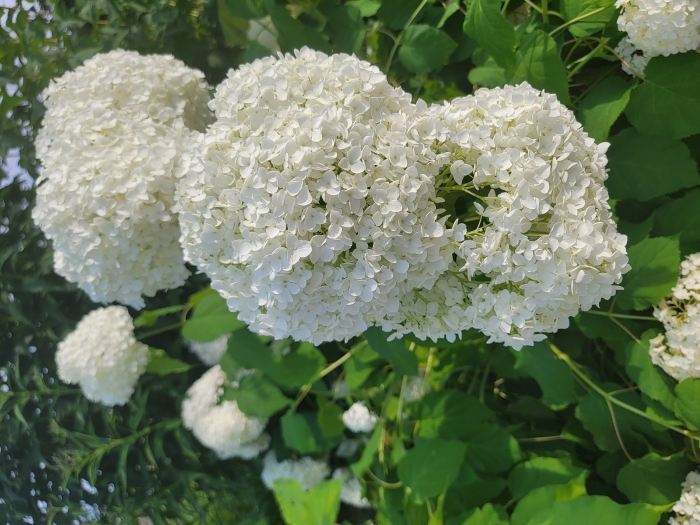Wild Hydrangea
(Hydrangea arborescens)
Wild Hydrangea (Hydrangea arborescens)
/
/

Fritzmann2002
CC BY-SA 4.0













































































Estimated Native Range
Summary
In cultivation, Wild Hydrangea is appreciated for its large, showy flower heads and its ability to attract pollinators. It is often used in border plantings, as a specimen, or in mass plantings for a dramatic effect in shaded areas. It is relatively low-maintenance but may require additional watering during dry spells. Pruning old wood after flowering can encourage new growth and larger flower heads. Potential problems include leaf spot and powdery mildew, but these can be managed with good air circulation and proper watering practices. It is not known for aggressive roots or significant disease issues.CC BY-SA 4.0
Plant Description
- Plant Type: Shrub
- Height: 3-5 feet
- Width: 3-5 feet
- Growth Rate: Moderate
- Flower Color: White
- Flowering Season: Summer
- Leaf Retention: Deciduous
Growth Requirements
- Sun: Part Shade
- Water: Medium
- Drainage: Medium
Common Uses
Bee Garden, Bird Garden, Border Plant, Butterfly Garden, Erosion Control, Fragrant, Low Maintenance, Potted Plant, Rabbit Resistant, Showy Flowers, Street Planting
Natural Habitat
Understory of woodlands and along stream banks in the Eastern United States
Other Names
Common Names: Sevenbark , Smooth Hydrangea , Tree Hydrangea , Wald-Hortensie , Hortensia De Virginie , Hortensia En Arbre , Hydrangelle Arborescente , Vidjehortensia , Migugsugug , 미국수국
Scientific Names: Hydrangea arborescens , Hydrangea arborescens var. arborescens , Hydrangea arborescens subsp. arborescens , Hydrangea arborescens var. oblonga , Hydrangea cordata , Hydrangea arborescens var. australis , Hydrangea arborescens var. sterilis , Hydrangea arborescens f. acarpa , Hydrangea arborescens var. cordata , Hydrangea vulgaris
GBIF Accepted Name: Hydrangea arborescens L.